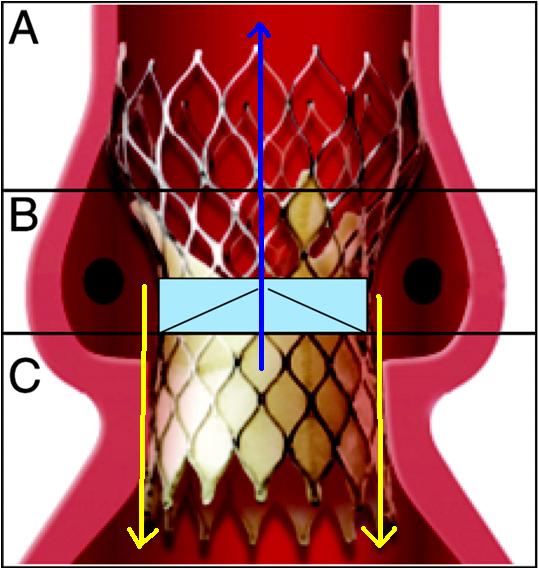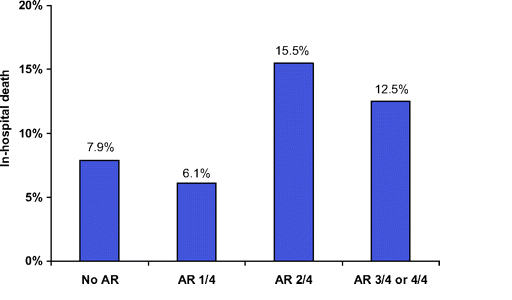Aortic Regurgitation (AR) is rare complication following surgical aortic valve replacement (AVR). Contrary to AVR, AR is common following transcatheter aortic valve implantation (TAVI). In the picture, the blue arrow represents normal flow, yellow regurgitation (leakage).
TAVI was developed as an alternative therapy for patients who no longer are candidates for traditional aortic valve replacement or repair, procedures that are and probably always will remain the gold standard for treatment of aortic valve disease. As such, TAVI is a legitimate alternative for patients who otherwise have a very limited life expectancy.
A new study examined 690 otherwise inoperable patients who were treated with TAVI. Significant AR occurred in 119 patients (17.2%). In-hospital death rates were significantly higher in patients with significant AR than in those with no/mild AR (15.1% vs 6.7%).
(In-hospital mortality and post-procedural AR. In-hospital mortality rates stratified according to the degree of post-procedural AR. AR, aortic regurgitation, p for trend=0.005.)
The presence of significant post-procedural AR was a strong independent predictor of in-hospital death.
Comments:
This confirms the rationale of limiting TAVI to patients who are not eligible for traditional Aortic valve surgery. If its usage is expanded to lower risk candidates, complications such as AR and stroke, much more common with TAVI, will prove disastrous! I am pessimistic however, that this will prevent TAVI from being implemented in healthier patients.
Dr T


